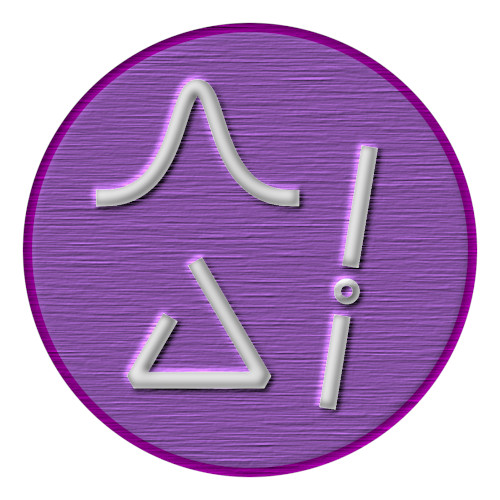True Truth & pseudo-truth

“Remember that all is but opinion and conceit” - Marcus Aurelius.
There are myriad truths. There are half truths, perceptions and experiences of truth. There are alternative facts, counter-history and even hallucinations that manifest as truth. We here are blessed and humbled that the Holy Spirit has gifted us with the ability to see unequivocal Truth. And we are deeply saddened that so few have been equally gifted.
True Truth is found within the circle. It is absolute and constant throughout the immensity of time and space. And it is this[1]:-
$$ \LARGE{ \text{circumference} = \pi \times \text{diameter}}. $$
There is absolutely no other true Truth outside of mathematics. Perhaps the Neolithic architects of Stonehenge knew this, building their monument in a circle. (How have we forgotten true Truth over time?) All else is nought but opinions and conceits.
But, unfortunately true Truth also ends with the circle. What follows is then just peoples’ psychological interpretations of their own truths. Some call them ‘facts’, but actually it’s just pseudo-truth.
We have no intention to discuss the epistemology of beliefs and their justifications. That is Wikipedia’s role and for the students of Gottfried Liebniz and Sigmund Freud, or followers of Sam Harris. Rather we intend to demonstrate that what most accept as concrete truth, isn’t. According to Elizabeth Loftus, “What we believe with all our hearts is not necessarily the truth”. And this confusion is nowhere else as important and dangerous as in the field of cryptography and the generation of it’s keys and IVs. The Oxford Dictionary’s definition of ‘truth’ is certainly not ‘What the government tells you,’’ especially regarding cryptography, TRNGs and OTPs. But this is all starting to sound rather conspiratorial.
Yet to have access to truly random numbers is to have the ability to hold private conversations. Private from anyone, including Them. This is why it matters.
Inspired by Voyagers’ Golden Records’ covers, the following is REALLYREALLYRANDOM’s depiction of real Truth and pseudo-truth. Now as then, it illustrates who, what and where we are. Going round counter-clockwise, starting at the spiky hump thing at 11 o’clock:-

A representation of true Truth & pseudo-truth.
Normal distribution
Whist many (wacky) statistical distributions exist, a lot of variables in real life are normally distributed. Things like weights of cans of beans, blood pressure or JPEG file sizes from our Photonic Instrument. There is a mean ($\mu$) which is the most likely value. But other values are possible too, just with diminishing probability as the distance of $Z$ increases away from $\mu$. Have lots of fun at https://www.mathsisfun.com/data/standard-normal-distribution-table.html. Pr(moon landing = faked) may be miniscule, but Pr(conspiracy theory = actual conspiracy) may be quite high. Similarly Pr(AES = broken) is undefined, but cannot be unequivocally stated as being zero.
Whilst distribution of OTPs is more problematic than Diffie–Hellman key exchange, the last 100 years of history shows us that OTPs are perfectly useable within limited but appropriate scenarios.
Similarly, quantum key distribution is demonstrably possible (you can buy them), yet many social media ‘cryptographers’ scoff at the notion, labelling them useless marketing gimmicks. Aspects and glimmers of truth lie within the tails of the distribution.
Penrose triangle
This shape is simple to draw yet impossible to make. Although, here is a real one! The trick is that the Penrose triangle is only possible (true) from a certain point of view. Other points of view reveal the illusion. Utilitarianism suggests that “The needs of the many outweigh the needs of the few,” yet famously all Trekkies also know that sometimes “The needs of the few outweigh the needs of the many.” Obi-Wan Kenobi said it more directly: “Luke, you’re going to find that many of the truths we cling to depend greatly on our own point of view.”
Perhaps it is acceptable for the government to sabotage or to over egg the randomness of Intel’s RDRAND TRNG as long as no one else can break it, in an enactment of US NOBUS doctrine. Should strong encryption be banned altogether in the name of national security, or allowed in order to protect journalists, peaceful activists and whistle-blowers? And which point of view is the correct one: security or privacy?
Many amateur and professional cryptographers seem to live by the ‘put all your eggs into one basket and guard it really well’ paradigm, rather than the more practical ‘don’t put all your eggs into one basket’. Just because secure cryptographic primitives are tricky to develop, it seems counter intuitive to us that the entire world should only rely on a (defacto) single AES-GCM encryption algorithm. No other field of human endeavour follows this approach. You decide how to best store your ‘eggs’, but all farmers know the correct answer.
Small Blue Dot
The little dot represents the Earth floating lonely through space, caught in a sun beam. Carl Sagan’s iconic photograph highlights that all our inalienable rights and hard fought freedoms were conceived by small consciousnesses upon a mediocre planet located in no particularly significant place within the galaxy, never mind the universe(s). Thus we are blinkered chauvinists often unwilling to comprehend alternative perspectives or possibilities. Many scholars insist that carbon life is the only form of life possible, or that wheeled organisms cannot evolve.
We might also insist that it is more agreeable to have the Five Eyes surveillance partners intercept citizens’ personal data rather than the Russians or Chinese. UK gun legislation is viewed as deeply tyrannical by the US, whilst the UK views US gun legislation as absurdly liberal. It matters who poses the question and where, and frequently there is no universally correct answer even though local influencers pontificate that They’re right.
REALLYREALLYRANDOM insists[2] that TRNGs and their entropy sources are fairly simple to build. The apparatchiks at the popular crypto.stackexchange.com forum insist they’re not. America’s NIST is widely viewed by the (predominantly American) cryptographic community as scripture regarding non-deterministic random bit generators (à la TRNGs), and cryptography in general. Might someone elsewhere have equally valid but differing methods that work?
The circle
And finally. The circumference of the enclosing circle above is $ \pi \times 400 \approx 1257 $ pixels. True Truth. Take that Marcus Aurelius!
And so…
We learn that there are conspirators and dissenters, conspiracies and theories of conspiracy. There are an emperor’s words, and thus this site.
[1] Interestingly, expansions of $\pi$ are normal to all integer bases, $ b \ge 2 $. So it’s digits (whatever they may be) are perfectly randomly distributed. So much so that for $ b = 10 $ (decimal expansion), the frequency distribution of 2,500,000,000,000 places gives $\chi ^2 = 11.85$. ($\chi ^2 = 0$ for a perfect uniform distribution). (Ref. Daisuke Takahashi, Graduate School of Systems and Information Engineering, University of Tsukuba, Japan.)
[2] Whist crypto.stackexchange.com offers misconceived, contradictory and sniping comments as to why one can’t build a TRNG/entropy source, REALLYREALLYRANDOM.com offers pictures, schematics, explanations and mathematical analyses as to why one can.